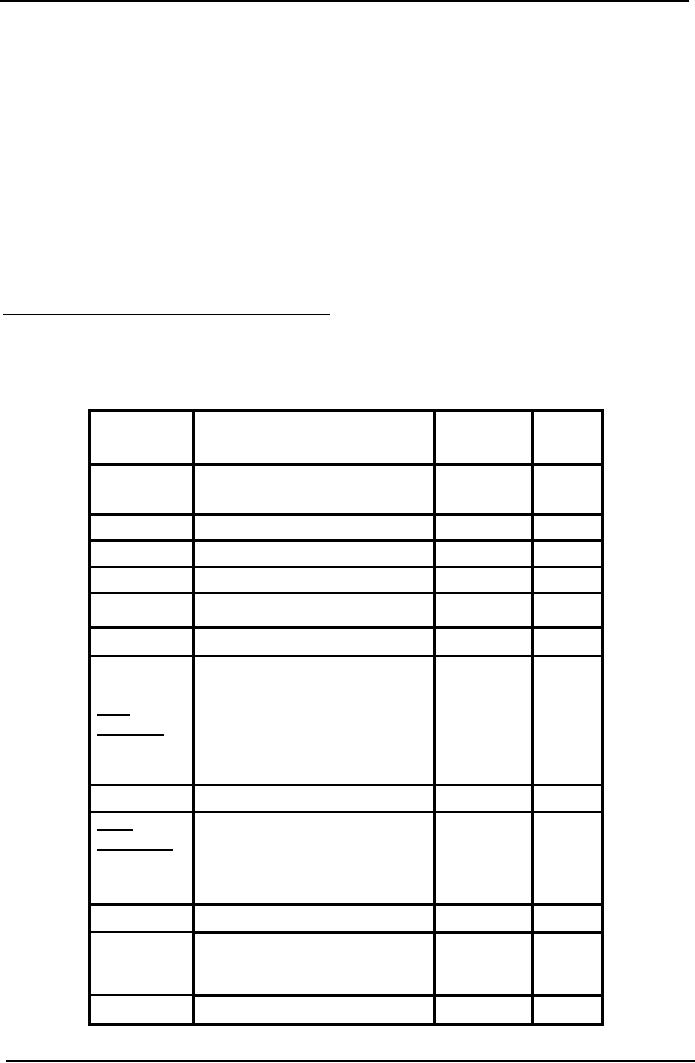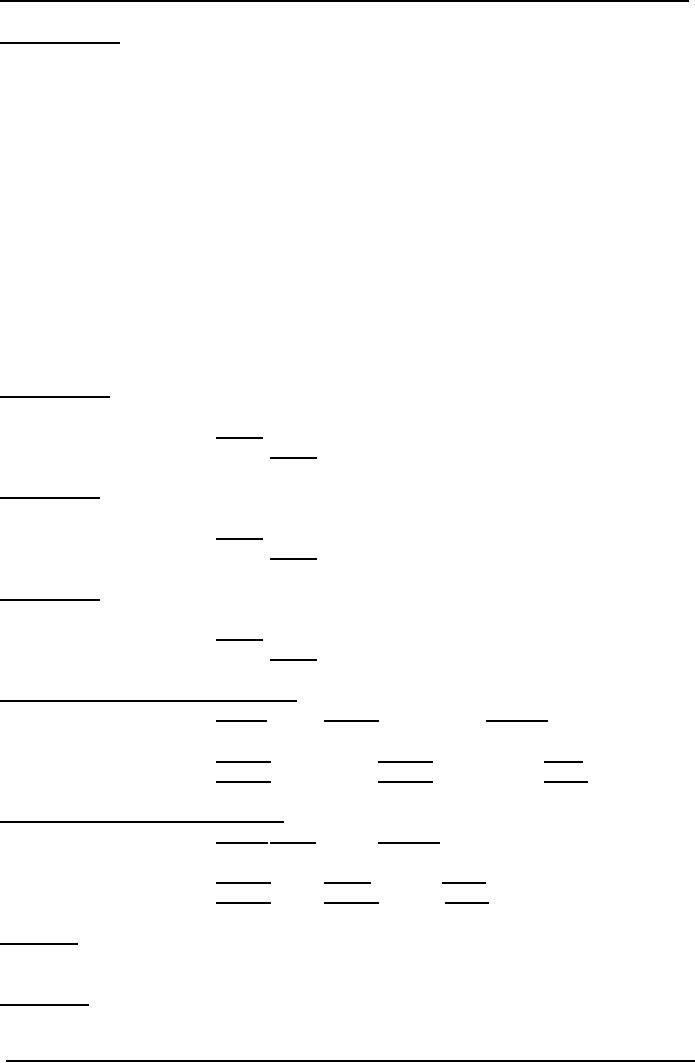 |
Complex Cash Budget & Flexible Budget:Comparing actual with original budget |
| << TYPES OF BUDGET:Format of Cash Budget, |
| FLEXIBLE & ZERO BASE BUDGETING:Efficiency Ratio, Performance budgeting >> |

Cost
& Management Accounting
(MGT-402)
VU
LESSON#
39
Complex
Cash Budget & Flexible
Budget
The
cash budget is a summary of the
firm's expected cash inflows
and outflows over a
particular
period
of time. In other words,
cash budget involves a projection of
future cash receipts
and
cash
disbursements over various time
intervals.
A
cash budget helps the
management in:
�
Determining
the future cash needs of
the firm
�
Planning
for financing of those
needs
�
Exercising
control over cash and
liquidity of the
firm.
The
overall objective of a cash budget is to
enable the firm to meet
all its commitments in
time
and
at the same time prevent
accumulation at any lime of unnecessary
large cash balances
with
it:
Practice
Question---Complex Cash Budget
Data
relating to the months of February to
June is available
Prepare
the cash budget for the
month of April to
June
Months
Sales
Purchases
Wages
February
18,000
12,480
1,200
March
19,200
14,400
1,400
April
10,800
24,300
1,100
May
17,400
24,600
1,000
June
12,500
26,800
1,500
Particulars
April
May
June
Opening
2,500
2,480
0
Balance
Add
15,480
15,960
13,460
Receipts
Sales
Total
(1)
17,980
18,440
13,460
Less
14,400
24,300
24,600
Payments
Purchases
1,100
1,000
1,500
Wages
Total
(2)
-15,500
-25,300
-26,100
Closing
2,480
-6,680
-12,640
Balance
(1-
2)
Bank
O/D
0
6,860
12,640
Total
Bank O/D = 6,860 + 12,640 =
19,500
216

Cost
& Management Accounting
(MGT-402)
VU
Flexible
budget:
The
Flexible Budget is designed to change in
accordance with the level of
activity attained.
Thus,
when
a budget is prepared in such a manner
that the budgeted cost
for any level of activity
is
available,
it is termed as flexible budget. Such a budget is
prepared after considering the
fixed and
variable
elements of cost and the
changes that may be expected
for each item at various
levels of
operations.
Flexible budgeting is desirable in the
following cases:
�
Where,
because of the nature of
business, sales are unpredictable,
e.g. in luxury or
semi-luxury
trades.
�
Where
the venture is a new and,
therefore, it is difficult to foresee
the demand e.g.,
novelties
and
fashion products.
�
Where
business is subject to the vagaries of
nature, such as soft
drinks,
�
Where
progress depends on adequate
supply of labor and the
business is in an area
which
suffering
forms shortage of
labor.
Normal
capacity level 2,000
units
Original
budget
Fixed
cost
10,000
Variable
cost
40,000
50,000
Actual
capacity attained 1,500
units
Flexed
budget
Fixed
cost
10,000
Variable
cost
30,000
40,000
Cost
actually incurred
Flexed
budget
Fixed
cost
11,000
Variable
cost
33,000
44,000
Comparing
actual with original budget
Actual
Budget
Variance
Fixed
cost
11,000
10,000
(1,000)
UF
Variable
cost
33,000
40,000
7,000
F
44,000
50,000
6,000
F
Comparing
actual with flexed budget
Flexed
Actual
Variance
Fixed
cost
10,000
11,000
(1,000)
UF
Variable
cost
30,000
33,000
(3,000)
F
40,000
44,000
4,000
UF
Production
cost at normal
capacity:
Direct
cost
Direct
material
Rs.
30,000
Direct
labor
20,000
Indirect
cost
Indirect
material (Variable)
800
Other
variable production OH
cost
4,200
217

Cost
& Management Accounting
(MGT-402)
VU
Deprecation
(Fixed)
10,000
Other
fixed OH cost
5,000
Total
budgeted cost
70,000
Normal
capacity at 20,000
units
Direct
material
Rs.
26,900
Direct
labor
19,540
Indirect
material (Variable)
1,000
Other
variable production OH cost
3,660
Deprecation
(Fixed)
10,000
Other
fixed OH cost
5,400
Total
budgeted cost
66,500
Capacity
attained 17,600 units
Prepare
Flex budget at 16,000, 20,000
and 24,000 units
218
Table of Contents:
- COST CLASSIFICATION AND COST BEHAVIOR INTRODUCTION:COST CLASSIFICATION,
- IMPORTANT TERMINOLOGIES:Cost Center, Profit Centre, Differential Cost or Incremental cost
- FINANCIAL STATEMENTS:Inventory, Direct Material Consumed, Total Factory Cost
- FINANCIAL STATEMENTS:Adjustment in the Entire Production, Adjustment in the Income Statement
- PROBLEMS IN PREPARATION OF FINANCIAL STATEMENTS:Gross Profit Margin Rate, Net Profit Ratio
- MORE ABOUT PREPARATION OF FINANCIAL STATEMENTS:Conversion Cost
- MATERIAL:Inventory, Perpetual Inventory System, Weighted Average Method (W.Avg)
- CONTROL OVER MATERIAL:Order Level, Maximum Stock Level, Danger Level
- ECONOMIC ORDERING QUANTITY:EOQ Graph, PROBLEMS
- ACCOUNTING FOR LOSSES:Spoiled output, Accounting treatment, Inventory Turnover Ratio
- LABOR:Direct Labor Cost, Mechanical Methods, MAKING PAYMENTS TO EMPLOYEES
- PAYROLL AND INCENTIVES:Systems of Wages, Premium Plans
- PIECE RATE BASE PREMIUM PLANS:Suitability of Piece Rate System, GROUP BONUS SYSTEMS
- LABOR TURNOVER AND LABOR EFFICIENCY RATIOS & FACTORY OVERHEAD COST
- ALLOCATION AND APPORTIONMENT OF FOH COST
- FACTORY OVERHEAD COST:Marketing, Research and development
- FACTORY OVERHEAD COST:Spending Variance, Capacity/Volume Variance
- JOB ORDER COSTING SYSTEM:Direct Materials, Direct Labor, Factory Overhead
- PROCESS COSTING SYSTEM:Data Collection, Cost of Completed Output
- PROCESS COSTING SYSTEM:Cost of Production Report, Quantity Schedule
- PROCESS COSTING SYSTEM:Normal Loss at the End of Process
- PROCESS COSTING SYSTEM:PRACTICE QUESTION
- PROCESS COSTING SYSTEM:Partially-processed units, Equivalent units
- PROCESS COSTING SYSTEM:Weighted average method, Cost of Production Report
- COSTING/VALUATION OF JOINT AND BY PRODUCTS:Accounting for joint products
- COSTING/VALUATION OF JOINT AND BY PRODUCTS:Problems of common costs
- MARGINAL AND ABSORPTION COSTING:Contribution Margin, Marginal cost per unit
- MARGINAL AND ABSORPTION COSTING:Contribution and profit
- COST – VOLUME – PROFIT ANALYSIS:Contribution Margin Approach & CVP Analysis
- COST – VOLUME – PROFIT ANALYSIS:Target Contribution Margin
- BREAK EVEN ANALYSIS – MARGIN OF SAFETY:Margin of Safety (MOS), Using Budget profit
- BREAKEVEN ANALYSIS – CHARTS AND GRAPHS:Usefulness of charts
- WHAT IS A BUDGET?:Budgetary control, Making a Forecast, Preparing budgets
- Production & Sales Budget:Rolling budget, Sales budget
- Production & Sales Budget:Illustration 1, Production budget
- FLEXIBLE BUDGET:Capacity and volume, Theoretical Capacity
- FLEXIBLE BUDGET:ANALYSIS OF COST BEHAVIOR, Fixed Expenses
- TYPES OF BUDGET:Format of Cash Budget,
- Complex Cash Budget & Flexible Budget:Comparing actual with original budget
- FLEXIBLE & ZERO BASE BUDGETING:Efficiency Ratio, Performance budgeting
- DECISION MAKING IN MANAGEMENT ACCOUNTING:Spare capacity costs, Sunk cost
- DECISION MAKING:Size of fund, Income statement
- DECISION MAKING:Avoidable Costs, Non-Relevant Variable Costs, Absorbed Overhead
- DECISION MAKING CHOICE OF PRODUCT (PRODUCT MIX) DECISIONS
- DECISION MAKING CHOICE OF PRODUCT (PRODUCT MIX) DECISIONS:MAKE OR BUY DECISIONS